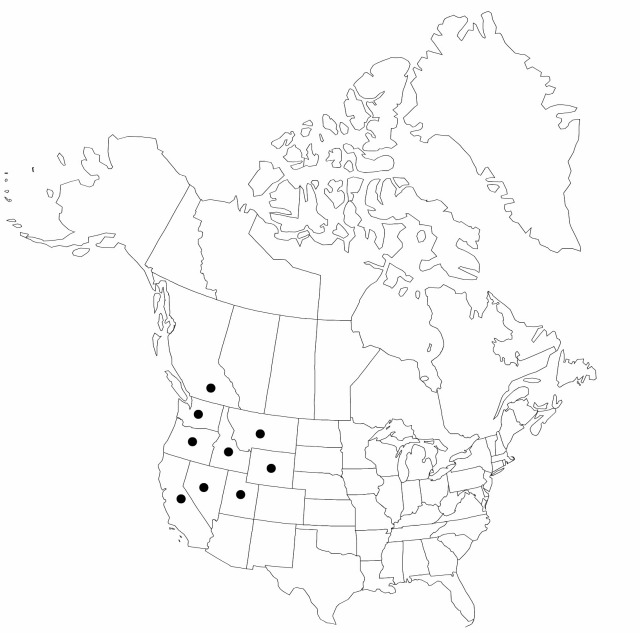Carex luzulina
Proc. Amer. Acad. Arts 7: 395. 1868.
Plants densely or loosely cespitose; rhizomes short, thick or thin. Culms to 90 cm. Inflorescences with 3–7 spikes; peduncles of proximal spikes exserted (0.5–)1 cm; proximal bracts with blades 12–80 mm, sheaths cylindric, 12–58 mm, mouth not purple-banded, 0.6–2 mm wide. Lateral spikes pistillate or androgynous, erect to pendent, purple or purple and brown, 12–32 × 5–10 mm;. Terminal spike staminate, ± erect, 11–66 × 3–8 mm. Pistillate scales red-brown to dark purple with paler midvein, ovate to obovate, 1.9–3.5 × 1–1.7 mm, apex acute or obtuse. Staminate scales gold to purple brown with pale, 2.9–4.5 × 0.7–1.6 mm, midvein ciliate, margins scarious, apex obtuse. Anthers (1.9–)2–3 mm. Perigynia ascending to spreading, green to purple, indistinctly or distinctly 9-20-veined, (3–)3.5–5.5 × 0.9–1.6(–1.8) mm, usually without flat margins around achene, usually glabrous, margins often ciliate-setose distally; beak 0.5–1.5 mm, tip dark purple, often ciliate-setose, distance from perigynium beak tip to achene apex less than 2.5 mm. Achenes ± obovoid, 1.3–2 × 0.7–1.1 mm.
Distribution

B.C., Calif., Idaho, Mont., Nev., Oreg., Utah, Wash., Wyo.
Discussion
Varieties 2 (2 in the flora).
Selected References
None.
Key
| 1 | Spikes dense; perigynia ± spreading, green or gold with red-brown or purple blotches; pale midvein of pistillate scales more than 0.2 mm wide and extending to tip. | Carex luzulina var. luzulina |
| 1 | Spikes lax; perigynia ascending, purple at least distally; pale midvein of pistillate scales usually less than 0.2 mm wide and not extending to tip. | Carex luzulina var. ablata |